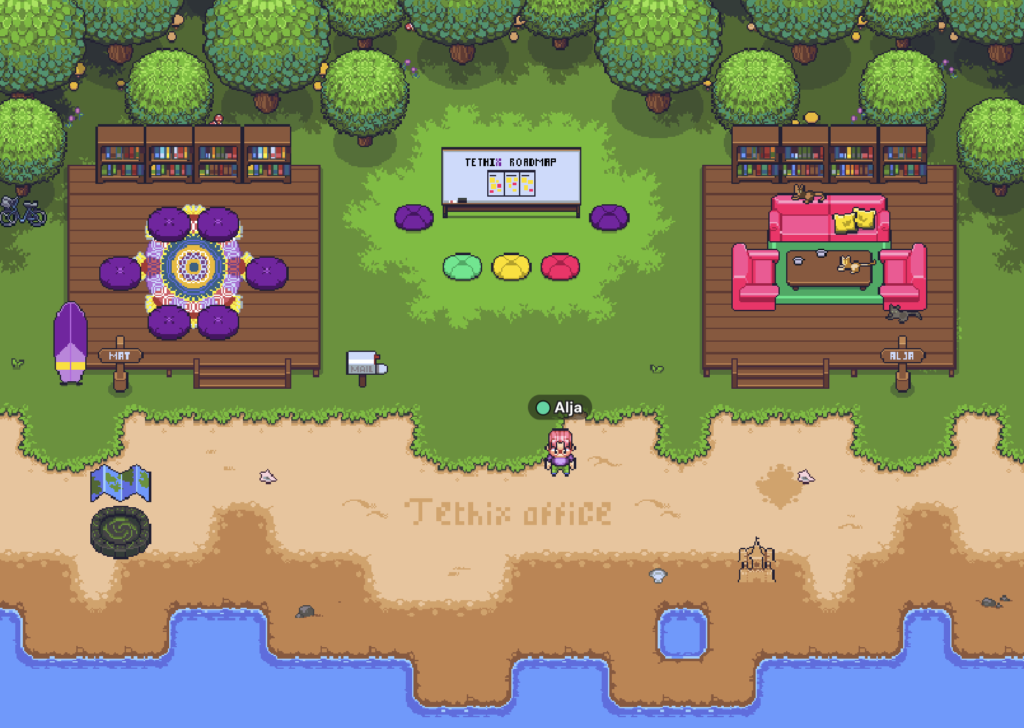Virtual spaces for learning and collaboration
Today, I’ve been doing a UCL short course. As we were coming back from a break, we were discussing the lack of ‘embodiedness’ in virtual interactions. This reminded me of experiments with different platforms that WAO did during the pandemic.
This post by Alja from Tethix is prompted by a challenge-based learning platform that I took part in last year. They’re focusing on tech ethics (hence the name) and their approach was great. It was just that the tools got in the way to some extent.
I think, after reading this, it’s time to experiment again with some of the tools mentioned in the post. Sometimes you do need a sense of play and feel like you’re connected in ways that go beyond small boxes on a screen.

The Tethix Archipelago emerged from the Challenge Based Learning pilot we did in March last year. For the pilot, we designed a unique collaborative online learning experience in tech ethics and used Mural collaborative whiteboards and visual storytelling to situate the learning journey in a fictional world: the Tethix Archipelago. The Archipelago consists of four islands that emerged from the four essentials skills of the Challenge Based Learning journey: collaboration, exploration, practice, and reflection.Source: Welcome to the Tethix Archipelago | TethixMural turned out to be a great tool for collaboration and live session guidance, but it didn’t really convey a sense of place. Clicking on a link in a Mural to visit the next leg of your journey just doesn’t feel like traveling, especially when you’re trapped in the same little Zoom box during every live session.
So we started exploring tools that could help us convey a sense of space and discovered Gather and WorkAdventure, among others. These tools offer two-dimensional virtual collaborative spaces where you can walk around a space with your avatar and have proximity-based conversations by using your microphone and camera.
[…]
You might be thinking: this is cute and all, but is this Archipelago all games and play? Well, playfulness is a big part of why we’re experimenting with these game-like worlds; we know that play helps us learn better and can unlock our imagination. But there’s much more to it than just millennial nostalgia for pixel graphics.
As already mentioned, Gather allows us to build a sense of place, both inside rooms and between them. And a sense of place helps with learning and memory encoding. Historical records show ancient Greeks using the method of loci or memory palaces, a technique for improving memory encoding and retrieval, and humans have been developing other mnemonic techniques based on spatial relationship for much longer than that. We’re physical beings, uniquely equipped to understand space, whether physical or represented by pixels.